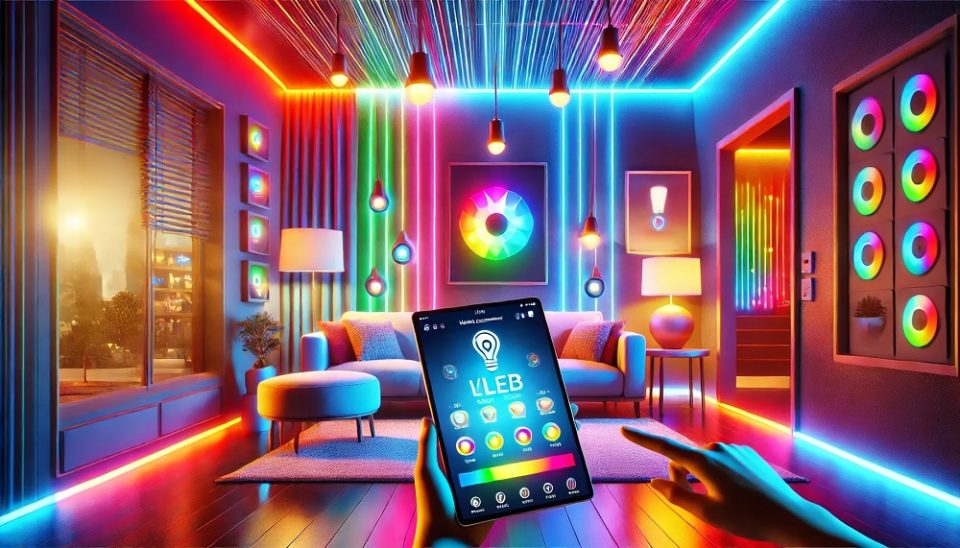In the ever-evolving world of home technology, two elements have emerged as pivotal in creating a smart, efficient, and comfortable living environment: home assistants and smart lighting. While home assistants have made managing our homes easier through voice control and automation, smart lighting has completely transformed the way we interact with our living spaces. Together, these technologies not only provide convenience but also enhance the overall ambiance, security, and energy efficiency of your home.
If you’re considering upgrading your home to integrate these smart technologies, you’re in the right place. Here, we explore how you can improve your home with the integration of home assistants and smart lighting systems.
1. Seamless Control with a Centralized Hub
The first step in improving your home with home assistants and lighting is ensuring that they can all be controlled from one place. A smart home assistant, like Amazon Alexa, Google Assistant, or Apple’s Siri, acts as the central hub, connecting and controlling multiple devices across your home. This centralized control is particularly beneficial for managing multiple smart lighting systems and other connected devices.
For example, imagine you’re entering your home after a long day. With a simple voice command like, “Hey Google, turn on the lights,” your assistant can activate your smart lights in the hallway, living room, and kitchen, creating the perfect ambiance without you needing to lift a finger. Additionally, many smart lighting systems can be controlled through dedicated apps, so even when you’re not at home, you can ensure that your lights are set the way you like them.
By using a home assistant to control your lighting, you streamline your daily routines and reduce the number of devices you need to manually adjust, which contributes to a more seamless living experience.
2. Creating Ambiance and Mood with Smart Lighting
One of the most immediate and noticeable ways home assistants and lighting improve your home is through the ability to set the mood with lighting. Smart lights, like Philips Hue or LIFX, offer a vast range of color options, dimming capabilities, and adjustable white light temperatures. With these features, you can transform any room’s atmosphere to suit your mood, time of day, or activity.
In the morning, you might want bright, cool white lighting to energize you, while in the evening, a warmer, dimmer light can help create a relaxing environment conducive to unwinding. With a smart home assistant, you can program these settings to occur automatically at certain times. For example, you can set the lights to gradually brighten as you wake up, simulating a natural sunrise, or dim down as you prepare for bed. This not only adds to the ambiance but also supports a more healthy, natural routine.
With the use of scenes—pre-set lighting configurations tailored to different moods or activities—you can create specific environments for various scenarios. Whether it’s movie night, a dinner party, or a cozy evening reading your favorite book, smart lighting controlled by your home assistant offers endless possibilities for personalized home ambiance.
3. Energy Efficiency with Smart Lighting
The integration of home assistants with smart lighting systems isn’t just about convenience; it also offers significant benefits for your home’s energy efficiency. Traditional lighting systems tend to waste energy by being left on unnecessarily, but with smart lighting, you have the ability to optimize your energy usage with ease.
Smart lights are typically more energy-efficient than traditional incandescent bulbs, consuming less electricity to produce the same amount of light. Moreover, when connected to your home assistant, smart lights can be programmed to turn off when they are not needed. For instance, if you leave a room, the lights can automatically switch off or adjust to a lower brightness level if no one is around.
Home assistants also allow you to set lighting schedules or use motion sensors to activate or deactivate lights based on occupancy. This ensures that lights are only on when necessary, cutting down on electricity consumption and reducing your energy bills. Additionally, many smart lighting systems offer energy consumption reports, allowing you to track and adjust your usage for maximum efficiency.
4. Improved Home Security with Smart Lighting
Another crucial benefit of integrating home assistants with lighting is enhanced home security. With the ability to control lighting remotely, you can create the illusion that someone is always at home, even when you’re away. This feature can be particularly useful for deterring burglars or unwanted intruders.
By programming your smart lights to turn on and off at random intervals, you can simulate your normal daily routine, making it seem like someone is home even when you’re not. For added security, you can integrate your smart lighting system with your home security system, ensuring that lights are triggered by motion sensors or security cameras. For example, if a camera detects movement outside, the porch light can automatically turn on, alerting you to a potential threat while also illuminating the area for greater visibility.
Additionally, some smart lighting systems allow you to customize the lighting patterns based on your preferences, ensuring that every corner of your home is well-lit at all times. This can make your home less inviting to intruders and more comfortable for those living inside.
5. Voice-Activated Assistance for Hands-Free Control
The most intuitive way to interact with your smart lighting system is through voice control, which is made possible by integrating home assistants. Imagine being able to control the lights in your home while cooking, cleaning, or entertaining guests, simply by using your voice.
With voice commands, you can do everything from adjusting the brightness to changing the color of your lights. A simple phrase like “Alexa, dim the lights in the living room” or “Hey Google, turn the kitchen lights to blue” makes managing your home’s lighting effortless. This hands-free control is especially valuable when your hands are full, and it contributes to a more accessible, efficient home environment.
In addition to controlling lighting, home assistants can also integrate with other home devices, such as thermostats, speakers, and entertainment systems, allowing you to create a fully immersive and controlled living space with just a few simple commands.
6. Integrating Smart Lighting with Other Smart Devices
To fully realize the potential of your home assistant and smart lighting system, consider expanding the ecosystem by integrating other smart devices into the mix. For instance, you can pair your lights with smart thermostats, security cameras, or entertainment systems to create coordinated routines.
Imagine this scenario: when you arrive home after a long day, your home assistant detects your presence through a smart lock or motion sensors. It then automatically unlocks the door, adjusts the thermostat, and turns on the lights to your preferred settings—all before you even step inside. Alternatively, during a movie night, your assistant can dim the lights, close the blinds, and adjust the temperature, creating the perfect cinematic environment.
These integrations create a highly personalized and automated home experience, where your home truly adapts to your needs without requiring constant input.
7. Customizable Lighting Scenes for Every Occasion
Smart lighting systems often allow for the creation of customized scenes that cater to specific activities or times of day. Whether you’re hosting a party, enjoying a family dinner, or reading a book, you can set up scenes that adjust the lighting to suit the occasion.
For example, a “Reading” scene could include warm, soft lighting with minimal glare, perfect for long evenings with a good book. A “Party” scene might set colorful lights to flicker and change in rhythm with your music. By using your home assistant to trigger these scenes, you can instantly create the perfect atmosphere without fumbling with manual switches or dimmers.
Conclusion
The integration of home assistants with smart lighting systems has the potential to revolutionize the way we interact with our homes. From creating a personalized ambiance and improving energy efficiency to enhancing security and offering hands-free control, the combination of these technologies offers significant advantages. By thoughtfully integrating smart lighting and home assistants into your living space, you can not only improve the functionality and comfort of your home but also elevate its overall aesthetic and security. Whether you’re looking to reduce energy consumption, simplify your daily routines, or add a touch of luxury to your environment, smart home technology is the key to transforming your house into a truly intelligent home.

